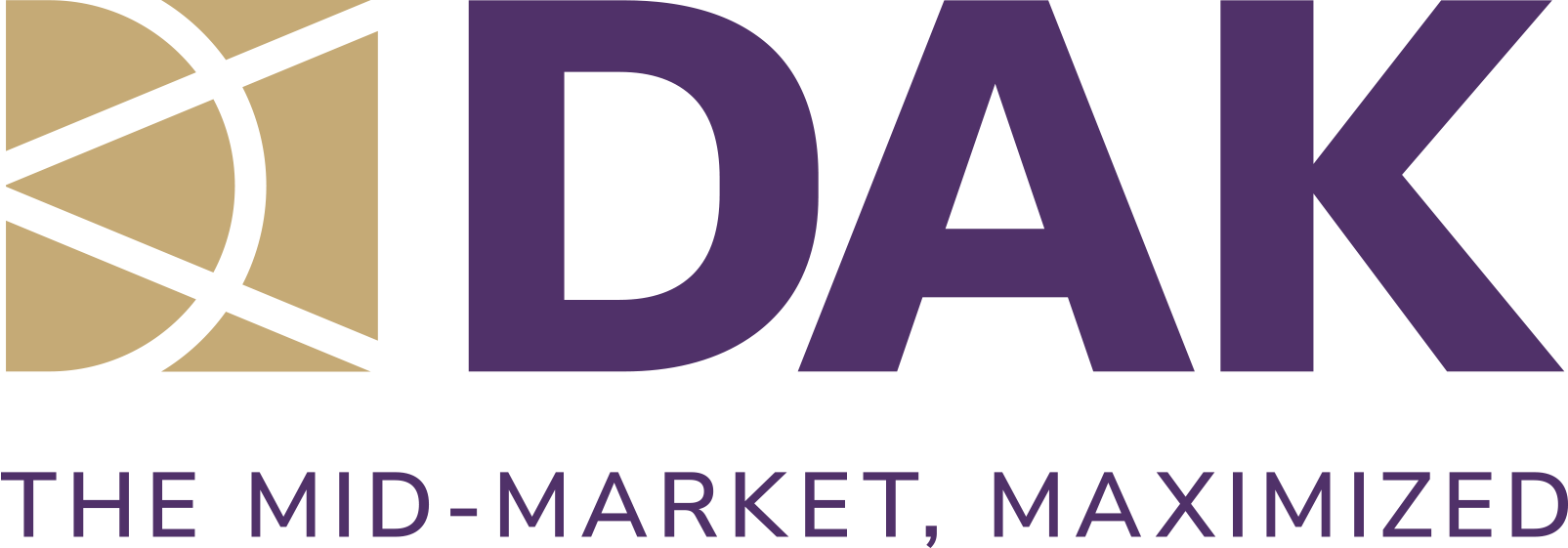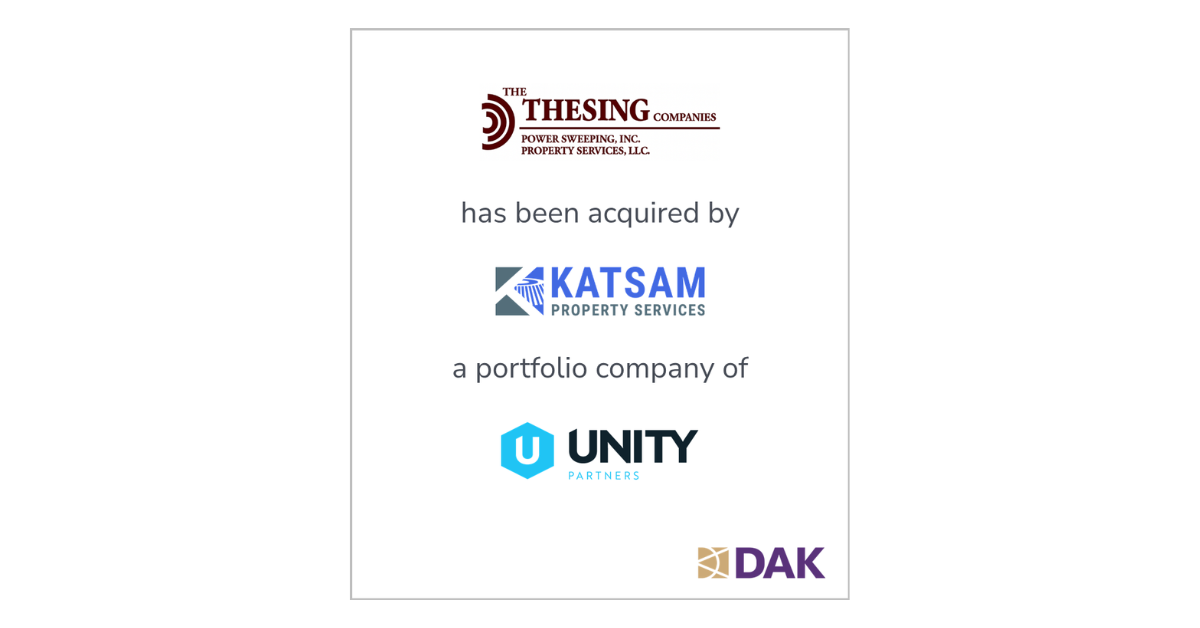Why A Company That Was Growing Exponentially Couldn’t Get Sold
A company that manufactured orthopedic implants for pets was growing and profitable. However, getting this company positioned for an exit and finding the right acquiring company proved to be an extraordinary challenge that required some insightful thinking.
Two women 25 years ago open a small retail bakery that makes sweets in the form of cookies and muffins. They opened their first bakery shop in Harlem in NYC and over time grew their cookie and muffin business to six locations. They were approached by a Private Equity Group who made a great offer. With the help of an advisor who increased the offer by nearly 40% seemingly out of thin air.
Transcript
Intro:
Do you know what separates a failed business exit from a highly profitable one? Do you want to maximize the value of your business? The Business Exit Stories podcast is the solution.
Through a collection of stories told by the business intermediaries who facilitate those transactions, you’ll receive the key takeaways from successful and yes, some not so successful business exits.
Now is the time to begin to position your business for an exit by implementing key strategies. Designed to maximize your enterprise value and help you achieve an exceptionally profitable exit.
Marvin L. Storm
Today we have with us on our podcast, Mike Richmond, an investment banker based in New Jersey. In part one of our two-part interview with Mike, he shares 2 transactional stories of companies that he has worked with over the years to sell.
The first company is one that manufactured orthopedic Implants for pets. Yes, you heard me right. Getting a new hip or knee is not now only for yourself but also for Fido or Fluffy, your pet dog or cat. The company was growing and extremely profitable. So, what was the problem in getting the company sold?
As Mike walks us through the challenges, he faced in getting this company positioned for an exit and finding the right acquiring company, he’ll share some interesting insights with you. The story is packed with tons of useful information that any founder or entrepreneur should want to hear about.
Next, Mike shares a sweet transaction, no pun intended. Well, maybe there is a pun intended because he shares a story of two women that 25 years ago started a small retail bakery that made sweets in the form of cookies and muffins. They opened their first bakery in Harlem in New York City and over time grew their little cookie and muffin business into a 6-location operation, making real dough. Again, pun intended. When Mike got involved in this transaction, he was able to increase the offer by nearly 40%.
You will need to find out what Mike did to create money literally out of thin air. Every business owner should take notes on this episode because if you do things right, you too can do as Mike did and create money out of thin air for your company when you are getting ready to sell it.
This is Marvin L. Storm with the Business Exit Stories Podcast.
We’re here with Mike Richmond.
Mike is a little bit different than a lot of folks we’ve had here on the podcast. He has a specialty investment banking firm, which I’ll have him talk about a little bit later here, but Mike, would you just take a few minutes to introduce yourself and where you’re located?
Mike Richmond:
But Marvin, first of all, thank you very much for inviting me to your podcast.
My name is Michael Richmond. I work for DAK. As Marvin said, we are an investment bank that caters exclusively to the middle market. We’re located in New Jersey about a half hour outside of New York City.
Storm:
Well, great Mike. I’m really excited to jump in here and have you share some of the transactional stories you’ve been involved in. So why don’t we get started with talking about a transaction that you’ve had in the last few years that had some of its challenges but, you know, was able to eventually consummate in a sale.
Richmond:
Well, the first one I’d like to talk about is a company that is a little bit different, a little unusual. This company manufactures artificial hips, knees, and elbows for dogs and cats.
I think we think of hip surgeries as a kind of a human event, but it is actually something that can be done with dogs and cats. People actually spend more on their animals. Some spend more on their animals than they do on their children, so we’ll leave it at that.
This company had two partners. One was an engineer and developed patents for these products and the other really handled more of the back office.
They were approached by a strategic buyer and quickly realized that that buyer was not serious, but it triggered discussions with them to consider a sale and we were brought in to conduct a sale of the company.
Storm:
So, this inbound offer that they received, they weren’t really thinking about selling the company at the time, but someone reached out and approached them, made them kind of a tentative offer and that kind of kicked in the thought process, “Well maybe we should consider what our options are out there”.
And then you were able to open up discussions with them and really get them sort of oriented to how they needed to start thinking about their company and if they were going to exit what the process was to do that.
Richmond:
That’s absolutely right Marvin. This inbound, and we’re seeing there’s a lot of inbound activity going on across all industries right now, where many companies are getting unsolicited offers. They really have no way of knowing whether they’re getting fair value for their company, good value, or low value.
But it’s exciting and it triggers a thought process and that’s what happened in this case.
Storm:
So, we have a situation here, we have a founder who’s an engineer and you know, since we’re talking about implants for pets, which always amazes me, people spend so much money on their pets, but they do.
I would imagine that he’s an engineer, so he invented some of the implants that became critical to the company’s success.
Richmond:
Now Marvin you’re spot on. These patents, these products were critical to the company’s success and the patent protection was critical as well.
And one of the things we did to prepare the company was to have them review their patents and for two reasons.
One to make sure their parents were protected and two that they weren’t violating someone else’s patent with their product.
Storm:
Who actually did the review? Was it their own attorneys? Attorneys that you brought in that were patent attorneys? Tell me a little bit about that process.
Richmond:
So, when they developed a new product, they typically used a firm that specialized in patent protection.
And what we did is we discussed with them, and ultimately this company prepared an analysis and gave an opinion of that, their products are in fact the patents were adequate to protect their products and two, just as importantly, that they were not aware of any violation of any existing patents with their products.
So, this company, the technology was really very crucial to the valuation of this company.
Storm:
Well, you know for sure that any buyer, I don’t care if it’s a financial buyer or strategic buyer is going to bring in their own attorneys to make sure that all the things that you’ve listed there are actually valid when it comes to patents. So, they were doing this sort of as a preemptive strike based on recommendations that you made to them.
Richmond:
Correct, we think it’s very important to be prepared when you sell your company and, in this case, part of their preparation was reviewing the patents.
We also have them review their financials you know, as you’d expect, with most companies to make sure that any personal expenses are taken out of the earnings to reflect the true value of a company.
So, we had them do that as well, but this was a unique aspect because of the technology and patents, we felt that it would be impossible to sell the company without doing this work and it takes some time as well to do this work.
Storm:
So, tell me a little bit we have a founder here that’s technically oriented.
He’s an individual that has expertise in developing products and patenting them.
How do the sort of key man issues here unfold when potential buyers did come to the table? I mean, was he willing to consider continuing to stay with the company or he’s looking just to fly off and lay on the beach someplace?
Richmond:
So, he was flexible. He liked what he did and whether he sold his company and stayed on with them.
He liked the idea of dabbling and inventing new products.
He was really an inventor.
What he didn’t like was a lot of the back-office business aspects like the accounting. Which his partner was really involved with, and his partner was aging, which we didn’t discuss, and his health was deteriorating.
So, when this offer came in it triggered the process to sell and it triggered a lot of thinking on his part as well as his partner’s part.
Storm:
So, what we really have here are two partners that are at different points in their life.
One is a little bit older and is looking really to retire, who handled the back office.
And kind of the front person who developed all the products but didn’t like the operational component of the business and was probably doing a lot more than he wanted to do because of the aging of his partner.
And this was really the motivation I guess behind them actually considering an exit because it was kind of good timing for them to look at a different type of structure going forward.
Which sounds like a pretty good fit for a buyer out there, especially perhaps a strategic buyer, what type of buyer eventually came to the table?
Richmond:
So, you’re actually right, it was a good particularly because the owners were going in two different directions and it’s very important that you have, you know, consistency in terms of a company going forward.
So, it was a great time to sell.
We ended up having a strategic buyer come in.
One who knew the space, who actually sold products not too similar to theirs, but what I would call the lower end product. So, they had the premium product in the industry.
The most expensive product, the best name, but that doesn’t mean that you were bad pet owner or if you get a cheaper hip implant for your pet.
It just means you’re in a different budget.
So, we actually sold to a company in this space, it was very…there were a lot of synergies between the two companies.
They sold similar products, but not all. There were certain products that one sold, and the other didn’t, and vice versa.
So now the opportunity to sell different products. This company the buyer was based in Europe.
They were based in the United States.
They were selling in different markets, and it was a great way for our client to sell their product more in Europe and the buyer to sell their product more in the United States.
Storm:
So, this is kind of like if you were to look for an analogy, I guess you could say it’s kind of like General Motors.
You know you have the high-end Cadillacs and the lower end you know Chevrolets.
You know both selling this same type of product but to different market segments.
And it sounds like this was a pretty good fit for the strategic buyer.
Was the strategic buyer actually someone in the business, it was, had founded the business like this group had? Or was this actually a Private Equity group or a larger company that this was as part of their acquisition strategy? Share a little bit with our audience about who the buyer was.
Richmond:
So, the ultimate buyer was a private equity, but they had bought another company in this space. That they were using that as the platform to buy our company. And so, the private equity provided the capital for the transaction. The company that they owned provided the opportunity for synergies and ultimately the private equity firm bought two other companies in this space.
And the company went public. And really was a home run for my client who retained a certain amount of ownership in the new company, in the combined entity and when it went public obviously, they did very well.
Storm:
OK, so just kind of rewind and kind of summarize what you’re talking about here. We have a founder who’s technically oriented. A buyer came in that was a strategic buyer.
Structured a deal that gave equity to the existing engineer, and I assume that his partner, who was a little bit older and had health issues actually retired from the business. And the engineer stayed on.
Did the R&D and the development and was probably pretty happy doing that.
And because the private equity buyer was kind of rolling up or acquiring other companies in this space at some point in time, they were able to package those companies together and I think you said go public. And we’ve got a much higher multiple and so the founder that had his original, you know, I don’t know what it was 20 – 30% equity, whatever he retained in the company, he probably got as much or maybe even more than his original sales price from the second exit is what your kind of indicating here. Is that kind of how I’m reading this?
Richmond:
Yes, you’re reading it absolutely correctly. We’re finding that when it comes to private equity they generally, not always but as a general rule like to see sellers remain with some sort of equity in the if you want to call the new company in terms of new co
And very often they will pay a premium when a company stays in
So, they may pay a 10-20-30% premium. So, if a seller decides to kind of roll or reinvest in the new company, and let’s say they invest 10% or 20%, they may get a 10 or 20% higher valuation
In other words, they’re getting for almost for free, so to speak, a continued ownership in their company because the valuation for their company is higher, because you’re showing their financial incentives to make this company a success
Storm:
Well, I think that’s a very good tidbit for our audience here to really start thinking about it as they kind of think of who the buyers might be out there for their company
And part of the exit strategy thinking is really how you want to structure something and stay involved with the company for a period of time and retain some equity in that entity going forward
Because if you do your job and both companies do their job, the acquiring company and you know remaining you know founder staying with the company you can tend to kind of have a second bite at the apple as I’ve often heard say
So, I would like to be curious for you to tell us Mike a little bit about you know, the challenges that you faced here.
It sounds like the challenges that you face was really one of valuation.
Did COVID have any impact on this company?
Richmond:
Well, so it’s a very good thing you say that. So, in the early period of COVID. If you remember there was a shortage of protective equipment, the PPE’s and all of that got diverted from the veterinary area to the human area, which obviously makes sense.
Storm:
So, it went from veterinary clinics to hospitals?
Richmond:
Hospitals…emergency rooms…so they basically shut down for the lack of protective gear and as a result there was a really virtual sales declined precipitously during the early period of COVID, but what else was happening during COVID as people were home, they wanted pets.
There were clearly animals that needed a replacement hip or an elbow or an ankle that need did not go away.
So, when the PPE loosened up and vets were allowed to conduct surgery there was actually an explosion in demand for their product and veterinary services.
So, we had to well, one of the challenges every company faces right now is what was the impact of COVID? Did it help their earnings? Did it hurt their earnings? And what are the true core earnings of a company?
And that’s one of the challenges in terms of getting a fair valuation.
Some companies will get a big bump if you’re selling PPE equipment or anti-bacterial equipment and solutions, your sales jump during COVID, but chances are they’re going to go back down when things get to more normal times.
Storm:
So, what would be the big takeaways in this transaction Mike?
Richmond:
Still, I think the takeaway from this, and many transactions is be prepared.
In this case, the preparation was a little bit unusual. We have the standard preparation of preparing numbers and at the same time making sure that their intellectual property, the patents, were in order, because that could have been something that could have been a big sticking point in valuation.
I think we had two owners here with clearly different goals in mind. How do you achieve both where one is actually essentially able to exit the business and one can continue to run the business?
So, these things have to be really resolved.
You don’t want to discuss these and deal with these in front the buyer, but you really want to do this before you go to market behind the scenes.
Storm:
Especially on the patent issue I know there’s been a guest on our show that have, you know, had the whole transaction blow up and not closed because the patents turned out to be invalid and couldn’t be protected and there was very little value there and so they couldn’t sell.
So, it’s a great take away and you did your homework.
So, you knew going in that there weren’t any issues and if there were issues, they could be addressed, so that’s a great take away for our audience. Whether it’s some financials or your contract, employment agreements, or things of that nature, be prepared in doing your homework.
OK, Michael, let’s kind of shoot over now and talk about a transaction that maybe didn’t have as many challenges and turned out well for the owner that was selling the company.
Share another transactional story with us.
Richmond:
So, I guess this is this was a very sweet deal both literally and figuratively.
We sold a cookie company, a bakery company, in the New York metropolitan area.
They were listed as one of the “Top 50 Foods You Need to Eat Before You Die” – great titles.
Storm:
Well, I need to get one of those.
Richmond:
Right, and I think TripAdvisor rated them one of the top food 10 food destinations in New York.
Storm:
So, this was a retail bakery type of outlet where people came in and bought their cookies and muffins.
Richmond:
Right, they picked up their cup of coffee maybe, but they really were in line for the cookies. And they literally had lines out the door.
Established by two really wonderful ladies. Two wonderful women who started this really as a hobby.
Storm:
Was this like 10 years ago, 20 years ago 30 years ago?
How long?
Richmond:
So, it was actually about 20-25 years that it took for the company to get established. They opened one store actually in Harlem.
Then started moving down the west side and started opening more stores and really, the word was largely word of mouth. Really tremendous people, tremendous corporate citizens.
I mean they not only did they have a great product which they charge premium pricing for I may add, but they were really good corporate people and at the end of the day you know every bakery had some leftovers obviously they try to minimize it.
But their leftovers went to the food banks and so the food banks really had great cookies and cupcakes at the end of the day, and it was really sweet.
Storm:
Sounds like this was a pretty good deal for them.
Richmond:
They really were great corporate citizens.
And the people really liked to work there, and it was just a great great atmosphere.
So, they were actually approached by a very smart strategic, a private equity firm that recognized the value of this company.
They were already expanding into more locations. At that point they had about 6 locations.
One of which was opened relatively recently and one which was about to open.
And this was a model that the private equity firm saw could be replicated and the growth could be actually more rapid.
Storm:
So, the private equity firm was really looking to take what was developed in the New York City metro area and take it to other cities around the country.
That was kind of their strategic vision, right?
Richmond:
Correct exactly that.
So, they came in and they offered what appeared to be a full valuation of the company.
And then they went to a lawyer who they engaged, and they said, you know, are we getting a fair valuation? He said, “Look my job as a lawyer I document a deal, but you got to speak to an investment banker to really understand the valuation.”
We were brought in and on the surface, it looked like the valuation, you know was a full value, but we always caution that a company shouldn’t be valued just on the basis of the multiple of the numbers.
And in this case, there were several factors that weren’t included in the valuation.
For one, they just opened a new store that had a lot of preopening costs and really didn’t reach its full level of sales.
Storm:
So, in that situation you had a double whammy.
You had earnings being depressed because of opening cost as well as the revenue had just started to grow.
Richmond:
Exactly exactly…
So that was one thing, and the other thing is, if you take a look at this company, their earnings are growing you know rapidly 5%, 10%, 15…each of the earnings growth is accelerating because their existing stores are doing well and growing and they’re adding new stores.
So yes, the valuation was at the high end but didn’t take into account the fact that the earnings were really understated because of these “one-time” events – the new store and the preopening costs for the other store as well as the growth, the high growth and the growth potential.
And as you said Marvin absolutely this product can be taken to Boston, Washington, or all around the country, and in fact they started doing that already
So, we came in and we were able to get the valuation raised about 30%
Which the owners were thrilled, but just as important as the top line, it was the structure of the deal.
That each deal, it’s not only the top line that matters, but it’s really what the net after taxes are to the buyer.
And we brought in their accountants and discovered that the structure of the deal was really not tax advantageous to our sellers, so we had the deal restructured. There’s always a trade off because once advantageous to sellers is very often disadvantageous to buyers, but we had a negotiation.
We had a much better structure, so the net increased. We had the top line increase by 30%, but the bottom line, after taxes, increased even more than that, probably about 40%.
And in addition, in this case as well, the owners retained some equity and the terms of equity, whether it’s equal to the buyers or at a different class, is very important and we were able to negotiate the terms of the equity to be more advantageous to our client.
Storm:
So, it sounds like in this situation, having you know someone to give you or give a seller input onto where the real value is in their company, and there may be some unlocked value tied up in the company that either the buyers or even the founders of the company might not truly appreciate what that means on a projected going forward basis and having someone come in that has some experience and takes a look at the financial statements.
And as you said, I think this is very interesting where you said that you know you had a new location that is, opening that you know in retail locations in New York City, I’m somewhat aware that you can have 500 million, 2 million dollars opening cost to build out because of the labor structure and permits and the time frame to open locations in New York.
Those can be really high, and you know that’s being thrown into the pot of earnings.
And that’s depressing earnings as well as that location hasn’t had those earnings materialize to offset those costs.
So, what may appear, and if you said, I think you said that the offer that was on the table by this unsolicited offer that came in was fair, based on those existing numbers, but you were able to peel back the onion a little bit and really determined that there was some unlocked value there.
And when you adjusted and accounted for that unlocked value and included it in the going forward projections. You increased evaluation and the sales price you said 30 or more percent, right?
Richmond:
Correct, and you touched on something very important it’s a broader of point here, which is like the building across Marvin and that is buyers look at future earnings rather than historical.
The historical earnings are there to justify the future.
But the buyers are looking to the future, and as sellers it’s important that the sellers look at future value as well.
If the value is going up rapidly, there should be a premium price, if sales are growing rapidly, excuse me, there should be a premium valuation.
And similar if earnings are flattening out or declining well, that’s going to result in a lower valuation as well. I think people make a mistake and look at historical values.
It’s really the future values that are key to a full valuation of a company.
Storm:
Yeah, I think it somewhat depends, you know if you have more main street type of businesses or smaller value, lenders tend to look at historical values and lend on the historical where a strategic buyer tends to look more why am I buying this? I’m buying this because of what I’m going to do with the company and what it means to me.
And so, I think there’s a little difference in the type of company that you have and who the buyers are.
But Mike, what would you say is the real take away here for our audience? What can they take away and learn from this transaction?
Richmond:
So, I think when your audience is approached with an offer, and it may seem like it’s great and you do a little research and you find out you know it seems to be a higher offer for your business…bring in some professionals to help you understand that offer.
In fact, number one, is it truly, you know, a fair offer and also is the deal being structured correctly to maximize your valuation.
Storm:
Well, I think that’s a great take away. You know, a lot of times there’s more than just the numbers and you have to really understand what the motivations of the buyers are.
The type of buyers at the table because of how you present that offering the sale of the company to the buyer is about as important as really the numbers are and as you said, the structure can make a huge difference too.
Well, these are some great takeaways.
Mike if someone wanted to reach out and get ahold of you how would they contact you? What would be the best way?
Richmond:
Best is to e-mail me at M Richmond, like Virginia, M-R-I-C-H-M-O-N-D at DAK Group and its spelled D-A-K group.com
Storm:
All right, great!
Well Michael, thank you for being with us here today and sharing your transactional stories.
I think there have been some great takeaways for our audience here that as they start thinking about their transition and exit strategies that they can learn from these takeaways you provided with here today.
So, this is Marvin L. Storm, and we’ll see you on our next episode with Mike.
Richmond:
Thank you, Marvin.
Outro:
Thanks for listening to the business Exit Stories podcast. For more information or to reach out to today’s guests, visit www.businessexitstories.com for more details.
Please subscribe rate review and share this podcast from your favorite podcasting platforms and remember maximizing business value at the time of exit.
Doesn’t happen magically, it takes planning.





